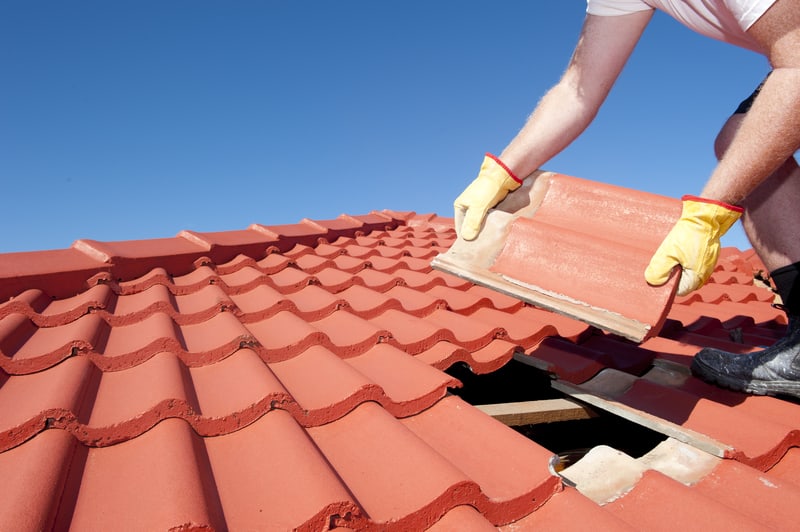A Comprehensive Overview to the Installment Process for Your New Roof Covering System
The setup procedure for a new roof requires careful factor to consider of various variables. From evaluating the roofing system's structural stability to choosing appropriate products, each action plays a vital function in making sure a successful outcome. Understanding the nuances of setup can stop future issues and enhance sturdiness. What are the necessary steps one must follow to attain a durable and trustworthy roofing system? The answer hinges on a systematic technique that attends to every essential element.
Understanding Various Roof Covering Products
When selecting a roof, recognizing various roofing products is crucial for making a notified choice. Numerous products offer distinctive advantages and disadvantages, influencing longevity, cost, and aesthetics. Asphalt roof shingles are preferred for their price and convenience of installment, making them a common choice for houses. Steel roof covering, known for its long life and resistance to extreme climate, attract those looking for resilience. Clay and concrete ceramic tiles supply an unique aesthetic and excellent insulation but can be much heavier and more pricey. Slate roof, commemorated for its all-natural beauty and extraordinary lifespan, has a tendency to be a premium alternative needing proficient installation. For environmentally-conscious home owners, environment-friendly roof systems, which incorporate plant life, present lasting benefits. Comprehending these materials allows homeowners to align their option with budget plan, climate factors to consider, and personal design preferences, inevitably making certain a roof covering option that satisfies their requirements properly.
Assessing Your Roof's Architectural Integrity

Examining a roof covering's structural honesty is crucial for ensuring its longevity and safety. This process entails inspecting the roofing structure for any signs of weakness, recognizing possible water damage, and identifying the lots ability to support different roofing materials. Dealing with these variables will assist keep the total health and wellness of the roof system.
Inspecting Roofing Structure
Before setting up a new roof, it is vital to extensively check the roof covering framework to verify its architectural stability. This procedure includes reviewing vital parts such as rafters, trusses, and the overall structure design. A competent examiner needs to look for indicators of wear, warping, or any type of architectural shortages that can endanger the brand-new roofing installation. Additionally, it is important to check for proper tons distribution, ensuring that the structure can support the weight of the new materials. Any identified problems need to be resolved before proceeding, as they can cause considerable issues down the line. By prioritizing this examination, home owners can assure a dependable and long lasting roof that will certainly endure the examination of time.
Recognizing Water Damages
Water damages can greatly influence a roofing's architectural honesty, making it important to identify any signs early in the assessment procedure. House owners ought to try to find discoloration or spots on wall surfaces and ceilings, which may suggest leakages. Drooping locations in the roofing system or ceilings recommend accumulated dampness that could jeopardize architectural parts. Examining the attic room is essential; mold development and damp insulation are signs of water breach. In addition, checking out the roof covering surface area for missing out on tiles, cracks, or rust on steel parts can disclose possible susceptability to water damage. Routine analyses can help in very early detection, permitting for timely repair services that maintain the roof covering's integrity and avoid considerable damage. Dealing with these indications promptly is vital for maintaining a durable and safe roof.
Evaluating Tons Ability
Evaluating the tons ability of a roofing system is necessary for assuring its structural stability and durability. This evaluation involves taking a look at the products used in the roof covering's construction, the underlying framework, and the total design. Aspects such as snow accumulation, wind tons, and the weight of roof products should be taken into consideration to establish whether the framework can support extra tons. An architectural designer can supply valuable insights, carrying out estimations based on neighborhood building regulations and environmental problems. Routine assessments and upkeep also play a vital duty in recognizing possible weaknesses. By completely evaluating load ability, homeowners can avoid pricey problems and make specific that their new roof covering system is sturdy and secure for many years to find.
Planning and Readying for Setup
Efficient planning and prep work are essential actions prior to mounting a roof covering system - top rated roofing companies near me. This entails reviewing details roof covering requirements and picking the appropriate materials that best fit those demands. A complete understanding of these components can significantly affect the success and longevity of the roofing project
Evaluating Your Roof Requirements
How can one ensure that their roof job satisfies both useful and visual demands? An extensive evaluation of roof covering needs is vital. This entails checking out the existing roof covering's problem, recognizing any damages, and establishing structural integrity. Property owners must consider their climate, as weather considerably affect roof product options and durability. Furthermore, reviewing architectural style and neighborhood looks is crucial for preserving building value and allure. Understanding individual choices and budget plan constraints further aids in making educated choices. Finally, speaking with roof specialists can give beneficial insights and referrals customized to certain demands. By thoroughly evaluating these aspects, homeowners can ensure their roof job aligns with their distinct demands and improves their residential property's general look.
Picking the Right Materials
When choosing materials for a roof task, it is crucial to think about both functionality and aesthetics to guarantee a successful setup. Property owners should think about the climate of their area, as particular materials do far better under particular climate condition. As an example, metal roof coverings use toughness in areas prone to hefty snowfall, while asphalt shingles may be more cost-effective for milder environments. In addition, the design of the home plays a considerable duty; products should enhance the building style to boost visual charm. Sustainability is one more variable; environmentally friendly choices like solar tiles or redeemed wood check my blog can reduce environmental impact. Ultimately, choosing the right products entails stabilizing these elements to safeguard a visually attractive and long-lasting roof system.
Safety Preventative Measures Throughout Installation
Ensuring security throughout roofing system installation requires thorough interest to detail and adherence to established procedures. Most importantly, workers ought to put on proper individual safety equipment (PPE), including helmets, gloves, and non-slip shoes, to minimize injury dangers. Scaffolding and ladders should be securely positioned and maintained to give steady job surfaces. It is vital to examine the roofing system framework for weak points or damage prior to beginning job, as this can avoid accidents later on.
In addition, installers must be educated in fall security techniques, including the usage of harnesses and guardrails. Weather also play a significant role; job must be delayed throughout high winds, rain, or storms. All tools and products should be organized and secured to prevent tripping hazards. By prioritizing these safety preventative measures, the threat of accidents can be notably lowered, making certain a safer working setting for all involved in the roofing installation process.
Step-by-Step Setup Process
An effective roof covering system installment entails a collection of very carefully prepared steps that guarantee both performance and high quality. Initially, the old roofing material should be eliminated, ensuring the underlying structure is undamaged. Next off, any needed repairs to the roof deck are performed, strengthening its stability. Following this, a wetness obstacle is mounted to secure against water infiltration. The selection of roofing material, such as shingles or steel panels, is after that laid out, starting from the eaves and proceeding upwards. Each piece is safeguarded carefully to stand up to weather. Air flow systems are incorporated to promote air flow and avoid dampness accumulation. Flashing is mounted around vents and smokeshafts to additional guard versus leaks. The setup is assessed for conformity with see this page regional building codes and manufacturer requirements. This extensive method guarantees a durable and dependable roofing system that fulfills homeowner expectations.
Completing Touches and Evaluations

When the installation of all components is complete, a thorough examination follows. This includes checking for appropriate positioning, safe fastening, and adequate sealing of joints. Assessors also assess ventilation systems to ensure peak air movement and dampness management.
Additionally, any kind of debris or remaining materials from the setup have to be cleared from the roof covering and bordering location. By diligently taking care of these information, property owners can ensure that their brand-new roof is not only practical however also aesthetically attractive, setting the phase for long-lasting performance and resilience.
Maintenance Tips for Your New Roof
While numerous home owners might neglect the significance of normal roof maintenance, developing a routine can considerably extend the lifespan and performance of a new roofing system. Normal evaluations must be conducted a minimum of twice a year, ideally in springtime and loss, to determine any potential problems early. Homeowners must look for loosened or absent tiles, indicators of wear, and debris build-up in valleys and seamless gutters.
Cleaning up the roof surface and seamless gutters is important to avoid water damages and mold and mildew growth. In addition, trimming overhanging branches can reduce wear and tear brought on by falling debris. It is likewise linked here recommended to keep an eye on indoor ceilings for indicators of leaks or water stains, which could suggest roof troubles.
Engaging a professional for yearly evaluations guarantees that any underlying problems are attended to without delay, maintaining the integrity of the roof system and providing tranquility of mind for property owners.

Frequently Asked Questions
How Long Does the Roof Covering Installation Refine Usually Take?
The roof covering setup process typically takes one to 3 days, depending on the job's size and intricacy. Variables such as climate condition and the kind of roof covering product can also influence the general timeline.
What Allows Are Required for Roof Installment?
The called for authorizations for roof covering setup generally include building licenses, structural permits, and, in some areas, electric or pipes licenses. Laws might vary based upon regional codes, necessitating examination with local authorities for details requirements.
Can I Stay At Home Throughout the Setup?
House owners can remain during roof covering installation, but it might be inconvenient due to sound and interruptions. Specialists suggest staying out of workplace for safety and security and to enable the staff to perform their tasks successfully.
Will My Insurance Policy Cover the Roofing Installment Expenses?
Insurance policy coverage for roof setup costs differs based on individual policies and circumstances. Homeowners must consult their insurance coverage provider to determine eligibility for insurance coverage, including elements like damages severity and policy specifications concerning roofing replacement.
What Takes place if It Drizzles During Setup?
Employees may stop development to avoid damages to materials and ensure safety and security if it rainfalls during installation. Rainfall can also delay completion, requiring added time for drying out and prospective re-evaluation of the roof task.
The setup process for a new roof covering system calls for careful consideration of various aspects. When picking a roofing system, comprehending various roofing materials is vital for making a notified decision. When selecting materials for a roof job, it is vital to take into account both capability and appearances to ensure an effective installation. Guaranteeing security during roofing system installation requires precise focus to detail and adherence to developed methods. An effective roofing system setup includes a series of very carefully planned steps that ensure both effectiveness and high quality.